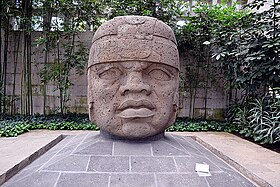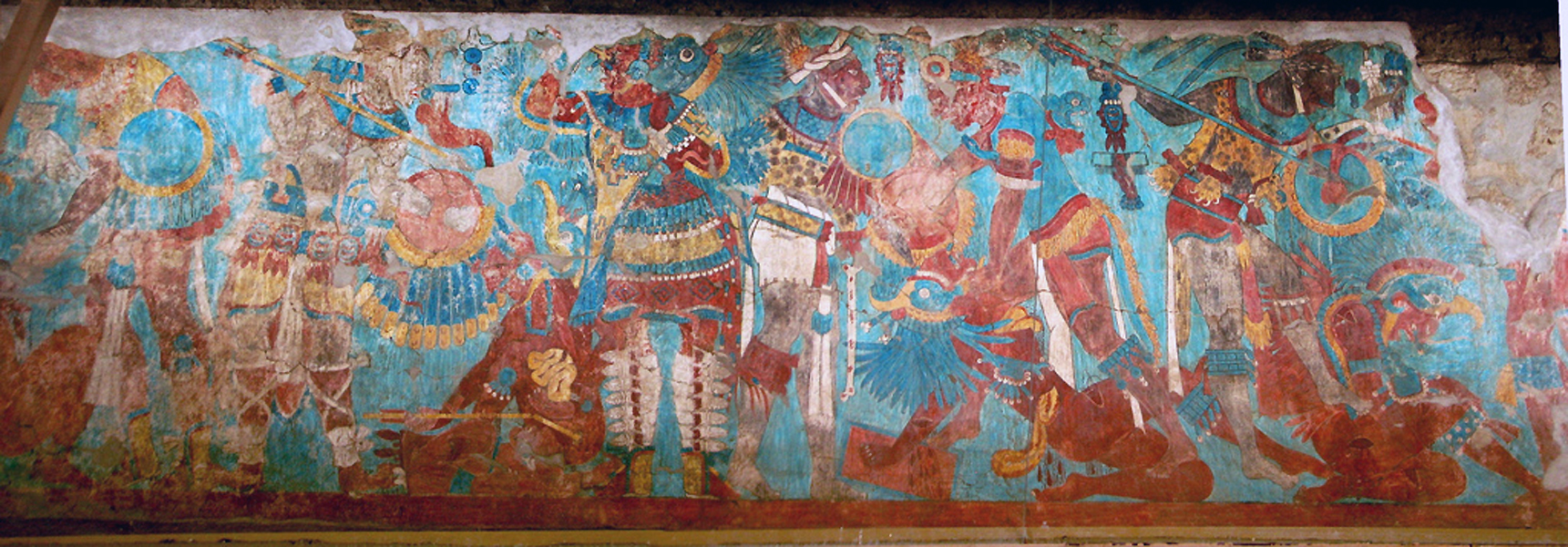I'm not aware of this theory of East Asians being blacks, maybe it's come from the great migration from Africa. But even this great migration from Africa is hard to know if the first humans was black or not.
But, about the Mesoamericans I heard about, I think you are talking about the Olmecs, who build some colossal heads with a physionomy who resembles african people. Because it's big nose and big mouth.
And there is also the Olmec-Xicalanca, who we discussed intensily in this thread already. Who maybe not correlated with Olmecs but they see a black skin as something very great, and paint their leaders with a black dye to resemble even more black.
that is a picture of a Eagle Warrior who also is propably a king also, because is holding a stick. And if you look closely it is very black.
And for last we have this painting, in the right corner is possible to see a black dude, propably painting by black dye. He is the king and he is going to the king room (who isn't in image, but it is in the right of this mural).
In the left side there is a white dude, it is a enemy. Propably the Yaquis. Invaders from the North (in Meso America the north have a light skin in comparasion with the south Meso americans).
In the middle there is 3 dudes stand, but just one is turned to the right, look his legs, it's painting with black dye. He maybe is the king before being painting totally with the black dye, so we can see his color of skin, isn't exactly black, but is darker then the Yaqui in the left corner.
 .
.



